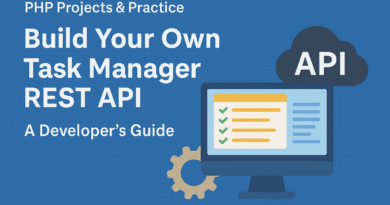HTML – Unlock the Web: Mastering HTML for Engaging Content and Seamless Navigation!
Unlock the Web: Mastering HTML for Engaging Content and Seamless Navigation!
Hey there, aspiring web creators and digital enthusiasts! Ever wondered how websites are built, how text gets styled, or how clicking a word takes you to a whole new page? Well, today we’re diving deep into the fascinating world of HTML – the backbone of the internet!
Think of HTML (HyperText Markup Language) as the architect’s blueprint for a house. It defines the structure, lays out the rooms, and indicates where the furniture goes. Without it, the web would just be a jumbled mess of unreadable information. But don’t worry, you don’t need to be a coding wizard to grasp these fundamental concepts. Let’s break it down!
Building Blocks of Brilliance: Content Structuring in HTML
Imagine writing a book without paragraphs, headings, or chapters. It would be impossible to read, right? HTML provides us with powerful tags to organize our content, making it not just readable, but also search-engine friendly and accessible for everyone.
Here are some essential tools in your HTML toolkit:
- Headings (
<h1>to<h6>): These are your headlines and subheadings, like the titles of chapters in a book.<h1>is for the main title,<h2>for major sections, and so on. Using them correctly helps search engines understand the hierarchy of your content, boosting your SEO (Search Engine Optimization)! - Paragraphs (
<p>): Your go-to tag for blocks of text. It neatly separates your sentences into readable chunks, making your content digestible and engaging. - Lists (
<ul>for unordered,<ol>for ordered,<li>for list items): Perfect for presenting information clearly, whether it’s a step-by-step guide (<ol>) or a list of features (<ul>). Organized lists are a reader’s best friend! - Divisions (
<div>) and Spans (<span>): These are like generic containers.<div>is typically used to group larger sections of content, while<span>is for smaller, inline elements within a paragraph. While they don’t add visual style themselves, they’re incredibly useful for applying CSS (Cascading Style Sheets) later to make your page visually stunning!
By using these elements thoughtfully, you’re not just throwing words onto a screen; you’re crafting a user-friendly experience that guides your audience through your message with ease.
Making Text Pop: HTML Text Formatting
Raw text can be a bit… plain. HTML gives us the power to emphasize, highlight, and transform our words to convey meaning and create a visually appealing layout.
- Bold (
<strong>or<b>): Use<strong>to indicate strong importance (which also helps search engines understand key phrases) or<b>for simply visually bolding text. Want to draw attention to a crucial point? This is your tag! - Italics (
<em>or<i>):<em>signifies emphasis (again, good for SEO!), while<i>is for traditional italicization, like for book titles or foreign words. Add a touch of sophistication or highlight a specific thought. - Underline (
<u>– use sparingly!): While<u>exists, be cautious. Underlined text is often confused with links, so it’s best reserved for very specific, non-link purposes. - Line Break (
<br>): Need to force a new line without starting a new paragraph?<br>is your simple solution. - Horizontal Rule (
<hr>): Creates a thematic break or separator, often displayed as a line across the page. Great for segmenting different topics within your content.
Mastering these formatting options allows you to make your content not just readable, but expressive and dynamic, ensuring your message truly resonates with your audience.
The Web’s Superhighway: Navigating with Links (Anchors)
What would the internet be without links? They are the very essence of “hypertext,” connecting us from one piece of information to another. In HTML, these are called anchors, created with the <a> tag.
The most common type of link is to another web page:
HTML
<a href="https://www.example.com">Visit Our Amazing Website</a>
Here’s the magic:
<a>: The anchor tag itself.href(Hypertext Reference): This is the most crucial attribute. It tells the browser where to go when the link is clicked. It can be a full URL (like above) or a relative path to another page on your own website.
Pro-Tip for SEO and User Experience:
- Descriptive Link Text: Instead of “Click Here,” use meaningful text that describes where the link goes, like “Learn More About Our Services.” This is fantastic for SEO and helps users know exactly what to expect.
- Targeting (
target="_blank"): Want the link to open in a new browser tab? Addtarget="_blank"within your<a>tag. This keeps users on your current page while they explore the new link, enhancing user retention!
Connecting Beyond the Browser: Email Links (mailto:)
Sometimes, you want to make it super easy for your visitors to get in touch. That’s where mailto: links come in! Instead of opening a web page, they trigger the user’s default email client, pre-filling the recipient’s address.
HTML
<a href="mailto:your_email@example.com">Email Us Your Questions!</a>
You can even pre-fill the subject line and body for a seamless experience:
HTML
<a href="mailto:info@example.com?subject=Inquiry About Your Services&body=Hello, I have a question about...">Get in Touch Today!</a>
This is a fantastic way to encourage direct communication and build a stronger connection with your audience.
Your Journey Begins Now!
Understanding HTML content structuring, text formatting, and links is more than just learning code; it’s about gaining the power to communicate effectively on the world wide web. These fundamental skills are your gateway to building impactful websites, creating engaging content, and ultimately, reaching a wider audience.
So, what are you waiting for? Start experimenting, start building, and start sharing your unique voice with the digital world. The web is waiting for your amazing creations!



